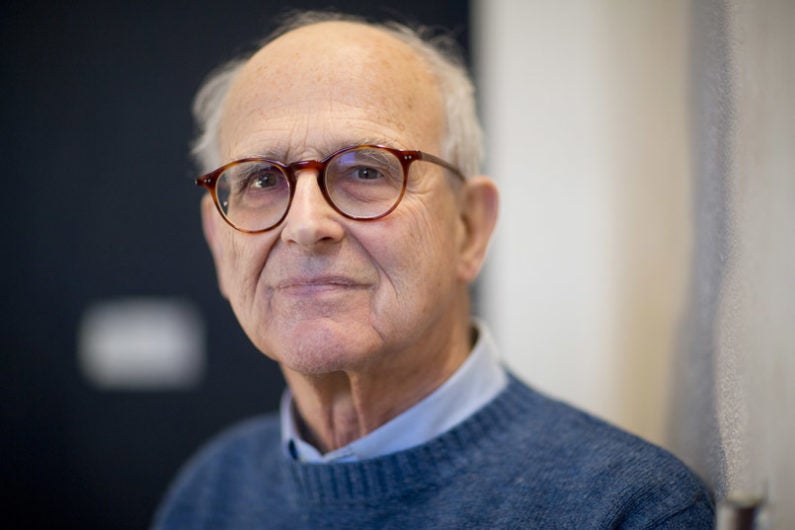Stanford’s 2017 Bunyan Lecture: exploring the universe with gravitational waves
In tonight's annual lecture, astrophysicist Rainer Weiss will reveal how research in gravitational wave detection can answer questions about the universe.
Forty years ago, MIT Professor Rainer Weiss envisioned an instrument capable of detecting ripples in space-time known as gravitational waves. On Sept. 14, 2015, a derivative of that instrument picked up a wave signal originating from the collision of two black holes 1.3 billion years ago – empirical evidence for the existence of gravitational waves.

MIT Professor Emeritus Rainer Weiss is the speaker at this year’s Bunyan Lecture, sponsored by the Stanford University Astronomy Program. (Image credit: Bryce Vickmark)
Weiss, now a professor emeritus at the Massachusetts Institute of Technology, will speak about the discovery at the Stanford Astronomy Program’s 34th annual Bunyan lecture, to be held today (Wednesday, Jan. 25). The event will be held at 7:30 p.m. in room 200 of the Hewlett Teaching Center, 370 Serra Mall.
Weiss plans to discuss gravitational wave detection and its history, describe the instrument – the Laser Interferometer Gravitational-Wave Observatory (LIGO) – and take a look into the future of this new field.
Stanford professor Vahe Petrosian, chairman of the Astronomy Program that selected Weiss, referred to Weiss as “one of the pillars of gravitational wave detection” and said the program selected Weiss based on his high academic standing and the timeliness of his research.
“I never thought we’d detect gravitational waves in my lifetime, so either I’ve lived too long or those guys have been very successful,” Petrosian said.
Named after James T. Bunyan, the lecture is free, open to the public, and intended to encourage knowledge and research “into the nature of the Universe and the origin and destiny of man.” Bunyan was a former member of the Hoover Institution and the lecture is made possible by his donation to the university.
To detect gravitational waves, LIGO uses laser light divided at a beam splitter into two identical four-kilometer beams, shot at 90-degree angles away from each other. Both beams are reflected off mirrors back toward each other where they meet again at the beam splitter. The combined beams hit a sensor. If the time taken by the two beams from the beam splitter and back again is exactly the same, no light falls on the sensor. If the beams are disrupted by gravitational waves, however, one beam stretches and the other shrinks by just a little. When this happens, the travel time of the two beams is no longer equal and light does fall on the sensor.
To be detectable, gravitational waves must originate from large, violent cosmologic events, like the collapse of a star. Following the event, gravitational waves radiate out at the speed of light, losing strength the farther they travel. The gravitational waves picked up by LIGO in 2015 were only strong enough to alter space-time by an amount one thousandth the size of an atom’s nucleus.
The direct measurement of gravitational waves has played an important role in confirming Albert Einstein’s general theory of relativity. In 1916, Einstein predicted that very large objects, like black holes, could produce enough energy to alter space-time and generate waves of gravitational energy, like a stone making ripples on a lake.
“Experimentally, we now have demonstrated that Einstein’s theory is right in strong gravitational fields,” Weiss said. “That’s important to a lot of people.”
LIGO is funded by the National Science Foundation and run by Caltech and MIT, along with 55 other institutions, including Stanford. According to Weiss, many of LIGO’s attributes were developed by Stanford researchers, including its seismic isolation system and lasers.
To Weiss, his work isn’t practical. It’s about gaining knowledge.
“Why do you do science? In this particular case, we don’t have a very good reason to be doing this, except for the knowledge that it brings,” Weiss said. “This research is especially important to young people. We all want to know what’s going on in the universe.”
